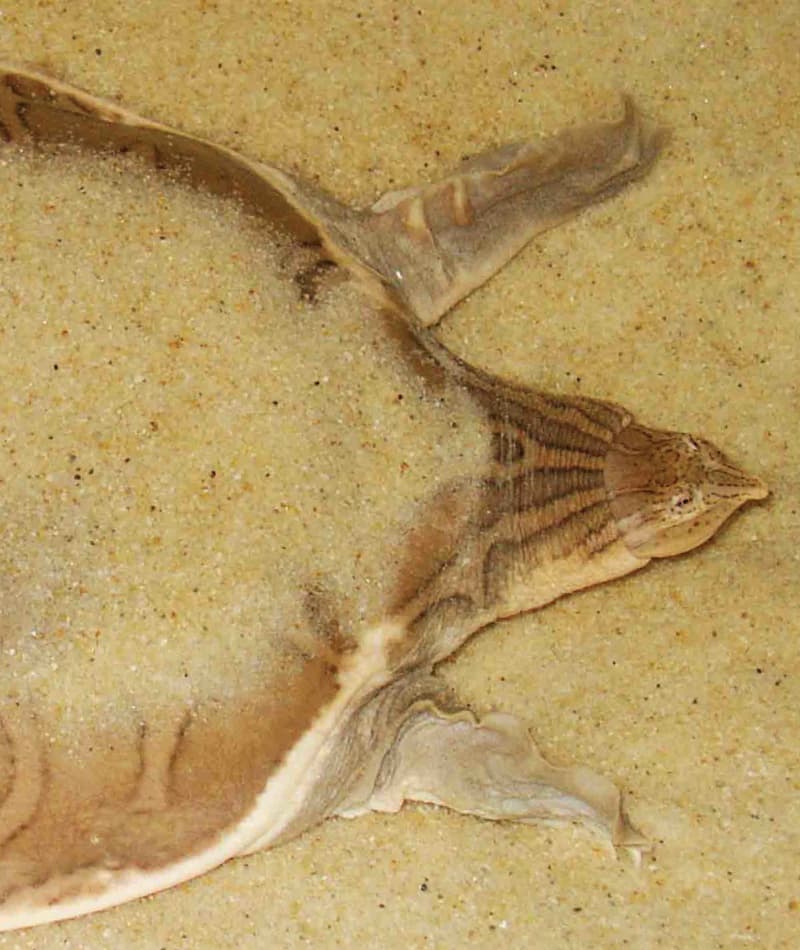
Narrow-headed Softshell Turtle
Chitra chitra
Did you know?
- Narrow-headed softshell turtles are part of the Trionychidae family, which they share with other turtles commonly known as the softshell turtles.
- They live in rivers in India and Malaysia.
- They do not have a hard shell!
- A female will lay 60 to 110 eggs per clutch.
- Little is known about narrow-headed softshell turtles.
Adaptations
Narrow-headed softshell turtles spend a lot of time hidden at the bottom of rivers, so not much is known about their lifestyle. They grow up to 45 inches long and can weigh over 260 pounds! Like all softshell turtles, each narrow-headed softshell has a carapace (upper shell) covered with leathery skin instead of hard plates (found on most turtle shells).
Diet
Narrow-headed softshell turtles spend most of their time in the water, hanging out on the sandy bottoms of deep rivers. An adult will bury itself in the sand and wait for its prey. This species eats a lot of fish, mollusks, crabs, and shrimp. Sometimes, they will eat plants.
Threat Level
- Unknown
- Common
- Near Threatened
- Threatened
- Endangered
- Critically Endangered
- Extinct in the Wild
Endangered
The name faces a very high risk of extinction in the wild.
Range
Southeast Asia
Habitat
Rivers

We care about Narrow-headed Softshell Turtles
Despite its relatively high reproductive rate, the narrow-headed softshell is in danger of extinction in the wild. The species is captured in huge numbers and sold as food or medicine in Asian markets. Though there are some international laws designed to limit the turtle trade, these laws need much better enforcement if they are to be effective.
We support narrow-headed softshell turtles in the
Charles H. Hoessle Herpetarium at the Zoo. Learn more about how we are
helping wildlife around the world.
Find this animal in Historic Hill

SAINT LOUIS ZOO ZONE
Historic Hill
Historic Hill is a lovely stroll through one of the oldest parts of the Saint Louis Zoo. From the 1904 World’s Fair Flight Cage to the Spanish architectural flavor of the 1920s in the Bird House, Primate House and Herpetarium to the finishing touches of our thoroughly modern exhibits, this area of the Zoo has a unique ambiance and a nostalgic history that make it a great destination.

